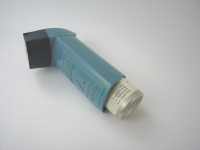Study Finds Promising Effects of Jarlsberg® Cheese on Bone and Metabolic Markers
MedicalResearch.com Interview with: Stig Larsen PhD Professor Emeritus Controlled Clinical Research Methodology and Statistics Norwegian University of Life Sciences Oslo, Norway
MedicalResearch.com:? What are the main findings?
Response: Osteoporosis is a major problem among elderly and malnourished people. Calcium, Vitamin D and Vitamin K are beneficial for bone health. Vitamin D stimulates calcium absorption and studies have shown that poor Vitamin K status intake is linked to low bone mass. Osteocalcin (OC) is a protein hormone found in the blood in activated and inactivated form. The activated form of Osteocalcin (cOC) binds calcium to bone tissue and plays an important role in regulating the metabolism. In addition, low levels of cOC are associated with insulin resistance, diabetes, and metabolic syndrome. It is desirable to have largest possible uOC, and vitamin K2 central in this process. The most important vitamin K2 variants in Jarlsberg® are the long-chain MK-7, -8, -9 and -9(4H), where lactic acid bacteria produce the first three, while MK-9(4H) is produced by Propionibacterium freudenreichii. The latter bacterium also produces the substance "1,4-dihydroxy-2- naphthoic acid" (DHNA), which has previously been shown to increase bone density in experimental mice. Two previous studies related to Jarlsberg® intake have been published:
- The first study showed that cOC in the blood increased with increasing Jarlsberg® dose up to a daily intake of 57 grams of Jarlsberg®. Even more startling was that the total OC (tOC) level increased significantly, and that triglycerides and cholesterol were significantly reduced.1
- The second study reproduced the findings from the first study and demonstrated additionally that the Jarlsberg dose of 57g/day could be reduced to 45 grams after 6 weeks without reducing the achieved level of tOC and vitamin K2.2
The BMJ-study3: The central variables measured in this study were the serum bone turnover markers (BTM); tOC and cOC, procollagen type 1 N-terminal propeptide (PINP) and serum cross-linked C- telopeptide type I collagen (CTX). Additionally, Vitamin K2 and Vitamin K status, serum calcium and serum magnesium were recorded together with the development in glycated hemoglobin (HbA1c), lipids and protein turnover. The participants in the study were randomly divided into two groups. One group of 41 healthy volunteer women of childbearing age ate 57 grams of Jarlsberg® per day and the other group of 25 women ate 50 grams of Camembert for 6 weeks. The Camembert was manufactured with a starting culture not producing Vitamin K2. The fat, protein, and energy content of the daily consumption of Jarlsberg® and Camembert is approximately the same. After 6 weeks, Camembert was replaced with 57 grams of Jarlsberg® per day for another 6 weeks. (more…)
Brigham Study of Supplemental Vitamin D and Risk of Bone Fractures Reported in NEJM
Oral and Inhaled Corticosteroids For Asthma Linked to Increased Risk of Osteoporosis
Bisphosphonates: Fragile Broken Bones vs Atypical Fractures
The benefits of bisphosphonates and other osteoporosis treatments, including the reduction of the devastating consequences of hip and other fractures...
Delays in Denosumab (Prolia®) Injections Linked to Increased Risk of Fractures
Effect of Anticoagulants Warfarin vs DOACs on Bone Health
Total Meal Replacement Diets Effective for Weight Loss, But Can Lead to Bone Loss
Older Women Need Screening For Hip Fracture Risk
Most Health Care Costs Associated With Osteoporotic Fractures Occur in First Year
Zoledronate (Reclast, Zometa) Reduced Fractures in Older Women with Osteopenia
Genetic Testing Could Identify Individuals At Risk of Osteoporosis
USPSTF: Women 65 and Older Should Be Screened for Osteoporosis to Prevent Fractures
Atopic Dermatitis (Eczema) Patients Have Higher Likelihood of Osteoporosis
Drug Holidays From Osteoporosis Meds Linked to More Broken Bones
 Brittany Bindon, MD
Department of Internal Medicine
University of Chicago
Chicago, Illinois
MedicalResearch.com: What is the background for this study?
Response: Bisphosphonates are commonly used in the treatment of osteoporosis, however, they have been associated with rare, severe side effects such as osteonecrosis of the jaw and atypical femoral fractures.
As a result, bisphosphonate drug holidays have become common in clinical practice though currently, there are minimal data on the safe duration of these drug holidays. We sought to further characterize the clinical and laboratory parameters associated with increased fracture risk in patients on bisphosphonate drug holiday.
(more…)
Brittany Bindon, MD
Department of Internal Medicine
University of Chicago
Chicago, Illinois
MedicalResearch.com: What is the background for this study?
Response: Bisphosphonates are commonly used in the treatment of osteoporosis, however, they have been associated with rare, severe side effects such as osteonecrosis of the jaw and atypical femoral fractures.
As a result, bisphosphonate drug holidays have become common in clinical practice though currently, there are minimal data on the safe duration of these drug holidays. We sought to further characterize the clinical and laboratory parameters associated with increased fracture risk in patients on bisphosphonate drug holiday.
(more…)Osteoporosis Drug Has Potential To Fight Triple Negative Breast Cancer
Later Puberty Linked To Lower Adult Bone Density
Exercise, Vision Testing and Osteoporosis Evaluation Are Keys To Fall Prevention
New Approach Could Lead To Osteoporosis Drugs With Fewer Side Effects
Dabigatran is Associated With a Lower Risk of Osteoporotic Fractures Compared to Warfarin
Regular, Long-term Resistance Training or Jump-Training Increases Bone Mass
Compared To Other Blood Pressure Medications Diuretics Have Bone Protective Effect
Menopausal Hormone Therapy Benefits Bone Health For Several Years After Discontinuation
Clinical Practice Guidelines For Diagnosis and Treatment of Postmenopausal Osteoporosis
Romosozumab Has Potential To Reduce New Vertebral Fractures at 12 Months
Long-Term Bone Loss Linked to Antidepressants May Be Ameliorated By Beta Blockers
Patients Remain On High Risk Drugs Even After A Fragility Fracture
Some Populations Are Genetically Immune to Osteoporosis
Risk of Second Fracture Highest Immediately After First Fracture from Osteoporosis
Humanized Antibody Romosozumab May Increase Bone Mass In Resistant Osteoporosis Patients
- 1
- 2














